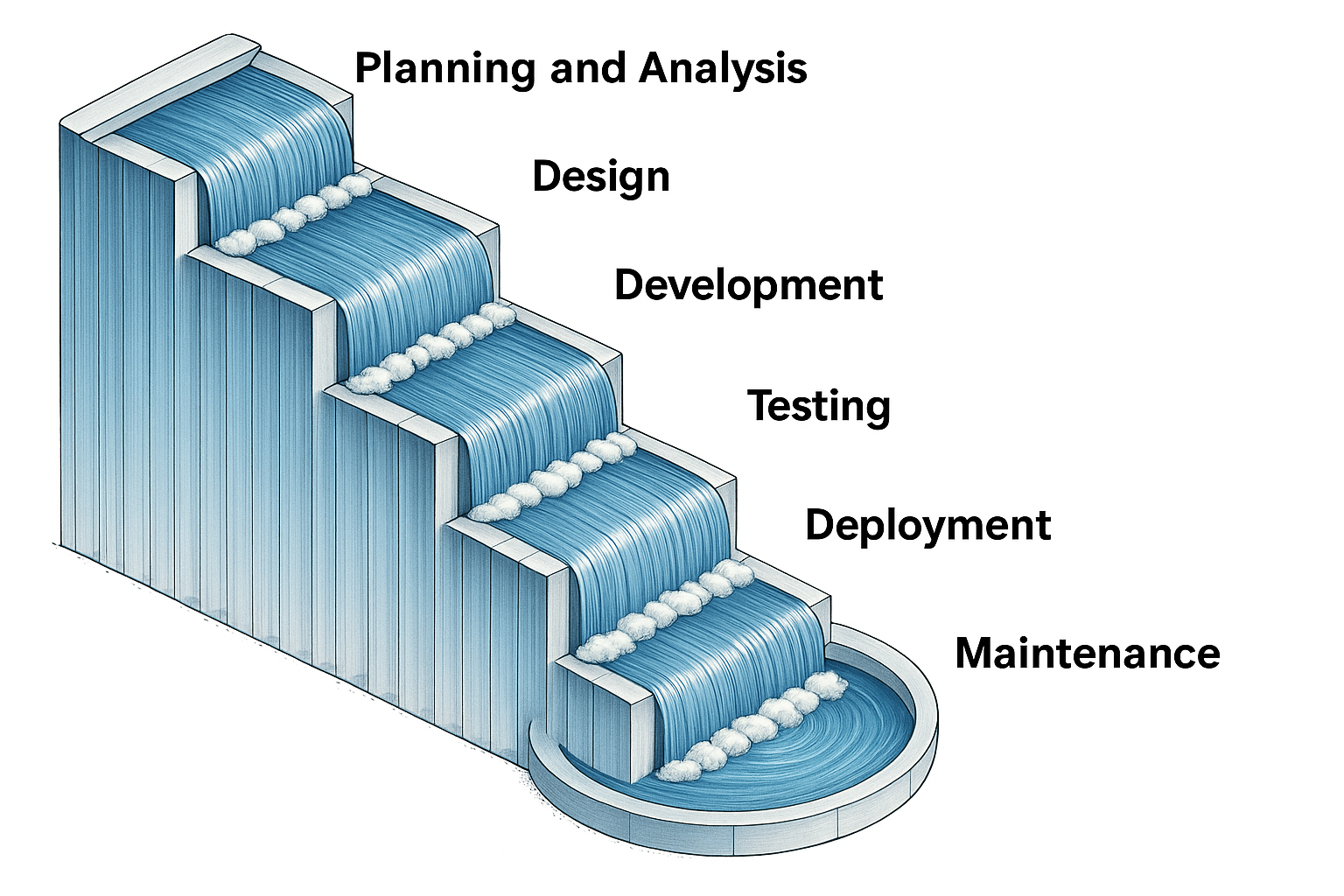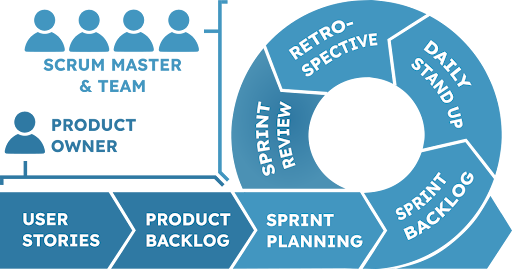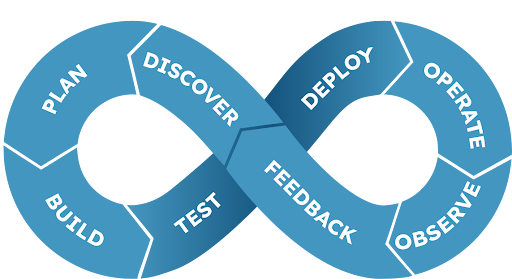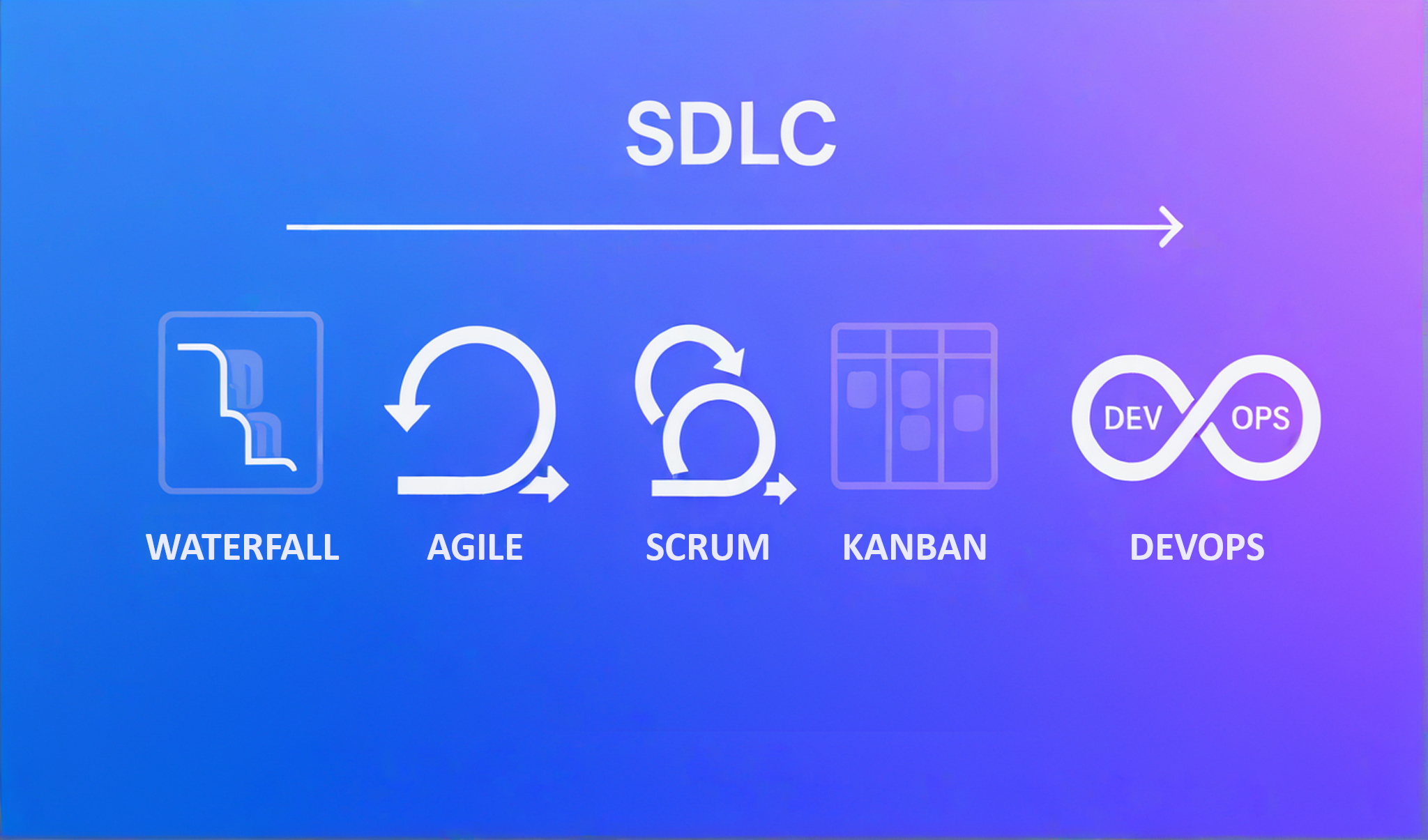This post introduces software development methodologies, the frameworks that help teams plan, organize, and deliver software projects successfully.
What Are Development Methodologies?
When you’re creating software, there are a lot of moving parts. It’s not just coding, it’s organizing tasks, assigning roles, and ensuring everything runs smoothly. Development methodologies are frameworks for planning and managing software development, helping teams break down work into smaller, manageable steps, either sequential or parallel.
Think of it like building a chair. You need to figure out:
- How should it look? Stiff or foldable?
- Where will it be used?
- What materials and tools do you have?
- How much time and space do you need?
Similarly, software teams use methodologies to streamline their work and focus on efficiency. These methodologies are like pre-made recipes, they’re proven, adaptable, and have been used to solve similar challenges successfully.
The Foundation: SDLC
Everything started back in the 1960s with the System Development Life Cycle, which evolved into what we now call the Software Development Life Cycle (SDLC). This concept introduced a series of stages designed to ensure smooth and successful software development.
The Six Stages of SDLC
| Stage | Description |
|---|---|
| Planning and Analysis | Product team collects requirements on what the program must do and how; includes product scoping, user expectations, acceptance criteria, cost and time estimation |
| Design | Software architects analyze requirements and design high-level architecture (components, technologies, interactions); UI/UX design also happens here |
| Development | Engineers implement the design; early iterations can be shared with stakeholders for feedback |
| Testing | QA specialists verify the implementation follows requirements and report bugs to be fixed |
| Deployment | The product is released to users; sometimes combined with Maintenance |
| Maintenance | Feedback is gathered through support; based on user feedback, new features and bug fixes are collected |
Note: These stages aren’t always rigid. Planning and Analysis are sometimes separate stages, and some methodologies include a Prototyping stage between planning and design to gather early feedback.
Every software methodology you’ve heard of, whether it’s Waterfall, Agile, or DevOps, implements the SDLC concept in its own way, determining how these phases interact and overlap.
Waterfall: The First Methodology
The first major software development methodology was Waterfall, directly based on the stages described in the original SDLC model. It follows a sequential approach where each stage starts only after the previous one is fully completed.
Think of it like a literal waterfall, each stage flows down into the next, step by step.
 Sequential stages of the Waterfall methodology
Sequential stages of the Waterfall methodology
How Waterfall Works
In Waterfall, timelines and deliverables are clearly defined right from the start. This approach comes from construction and manufacturing processes, where you need blueprints before you can start building. The team focuses on one phase at a time, making it easier to manage.
Pros and Cons
Advantages:
- Clear and structured process
- Well-defined end goal from the start
- Clean transfer of information between stages
- Simple to manage since teams focus on one phase at a time
Disadvantages:
- Lack of flexibility, changes require going back to the first stage
- Client/end-user often excluded from the process
- Testing delayed until the very end
- Blown deadlines and budgets when adaptations are needed
Best For: Projects with stable, well-defined requirements that are unlikely to change.
The Agile Revolution
In 2001, a group of influential IT figures introduced the Agile Manifesto, marking a major shift in software development. Agile wasn’t a set of tools or methodologies, it was a philosophy built around four key rules and twelve guiding principles.
The Four Rules of Agile
1
2
3
4
Individuals and interactions over processes and tools
Working software over comprehensive documentation
Customer collaboration over contract negotiation
Responding to change over following a plan
Source: agilemanifesto.org
Core Principles
Agile emphasizes:
- Flexibility and adapting to change
- Early and continuous delivery of value
- Strong feedback loops with customers
- Minimal documentation, just what’s barely good enough to get started
- Continuous testing as part of each iteration (not a separate phase)
- Customer involvement throughout the development process
Instead of trying to create a perfect product all at once, Agile teams work in iterations, delivering small chunks of value over time and adjusting based on feedback.
Scrum: Agile in Practice
Scrum is one of the most popular implementations of Agile philosophy. It breaks development into smaller cycles called sprints, typically lasting 1 to 4 weeks.
 The Scrum framework with roles, ceremonies, and artifacts
The Scrum framework with roles, ceremonies, and artifacts
Key Components
Roles
| Role | Responsibility |
|---|---|
| Product Owner | Represents the customer; ensures the team builds the right product by managing priorities |
| Scrum Master | Facilitates the process; organizes ceremonies, manages Scrum boards, helps remove blockers |
| Development Team | Designs, builds, and tests the product |
Ceremonies
- Daily Stand-ups, quick updates on progress and challenges
- Sprint Planning, laying out what to achieve in the upcoming sprint
- Sprint Review, presenting sprint results to stakeholders
- Retrospective, reflecting on what went well and what could improve
Artifacts
- Product Backlog, prioritized list of all desired features or tasks
- Sprint Backlog, tasks committed to for the current sprint
- Increment, completed work at the end of the sprint, potentially releasable
Pros and Cons
Advantages:
- Accelerates delivery through short feedback loops
- Prioritizes teamwork, communication, and transparency
- Reduces documentation overhead
- Adaptable to changing requirements
Disadvantages:
- Can be complex to implement, especially in larger organizations
- Requires high levels of team commitment and active involvement
- Managing scope and budget can be tricky without detailed long-term planning
Best For: Projects with evolving requirements that benefit from regular stakeholder feedback.
Kanban: Visualizing Workflow
Kanban (Japanese for “visual signal”) is another Agile implementation that emphasizes visualizing workflow and enabling continuous delivery. Its main goal is to limit work in progress to maximize efficiency and flow.
The Kanban Board
The central artifact is the Kanban Board, filled with Kanban Cards. The simplest board categorizes work into stages:
 Example of a Kanban board showing workflow visualization
Example of a Kanban board showing workflow visualization
It’s a pull system, meaning cards are dragged from left to right as work progresses. Each card represents a user story or work item that shouldn’t be too large.
Key Principles
- Visualize workflow to make all work visible
- Limit Work In Progress (WIP) to prevent overload
- Identify blockers and bottlenecks to optimize flow
- Encourage leadership and collaboration at all levels
- Enable continuous delivery without fixed iterations
Pros and Cons
Advantages:
- Easy to understand and implement
- Flexible planning that helps shorten time cycles
- Great for optimization, identify blockers, bottlenecks, and dependencies
- Set WIP limits to maintain focus
Disadvantages:
- Less useful in highly dynamic settings with rapid change
- Doesn’t inherently show timeframes (may need additional tools like Gantt charts)
- Less scalable than Scrum for larger projects
Best For: Teams with continuous flow of work, support/maintenance teams, or projects where priorities change frequently and you need maximum flexibility without fixed iterations.
Scrum vs. Kanban
- Scrum focuses on completing iterations (sprints) with specific roles, artifacts, and ceremonies aimed at creating a learning loop with customer feedback
- Kanban focuses on work visualization and continuously improving flow by limiting WIP and resolving bottlenecks to reduce project completion time
Other Notable Methodologies
Lean
Lean is distinct from Agile, though it shares similarities. Its primary goal is to eliminate waste and improve operational flow, creating a culture of continuous improvement.
Five Key Principles
- Identify value, understanding what’s valuable to the customer and prioritizing it
- Map value streams, eliminating waste, variability, and overburden
- Optimize flow, streamlining processes and automating where possible
- Establish pull, working based on demand rather than pushing work
- Continuous improvement, “Kaizen” in Japanese, meaning incremental enhancements over time
Best For: Organizations looking to optimize existing processes, eliminate waste, and improve efficiency across the entire value stream, particularly in manufacturing or production-focused environments.
Extreme Programming (XP)
XP is the most specific Agile methodology, emphasizing the technical side of development. It works best when software requirements are dynamic, there’s new technology involved, the project timeline is fixed, and the team is co-located.
Five Core Values
- Communication
- Simplicity
- Feedback
- Courage
- Respect
Key Practices
- Sit together, face-to-face communication
- Whole Team, cross-functional collaboration
- Energized Work, focused, distraction-free environment
- Weekly iterations and quarterly releases, regular delivery cycles
- Pair Programming, two developers working together at one station
- Test-first programming, using Test-Driven Development (TDD)
- Continuous Integration, “If it hurts, do it more often”, integrating code frequently to catch issues early
Best For: Projects with dynamic requirements, technical complexity, and co-located teams.
DevOps: A New Way of Working
DevOps, short for development and operations, is more than just another methodology. It’s a new way of working on a scale similar to what Agile brought to the table. In fact, DevOps is built on top of Agile philosophy.
While Agile emphasizes identifying features users will like, DevOps ensures that existing processes are optimized and streamlined.
How DevOps Works
DevOps is all about collaboration. Different teams come together as a multidisciplinary team that communicates and works closely at every step.
The lifecycle is visualized as an infinity loop:
 The DevOps infinity loop showing continuous integration and delivery
The DevOps infinity loop showing continuous integration and delivery
Key Features
- Uses rough objectives with only a few future sprints defined at any time
- Focuses on flexibility rather than rigid planning
- Employs the CI/CD pipeline (Continuous Integration/Continuous Delivery)
- Automates as much as possible across the entire lifecycle
- Developers can deliver code changes frequently, sometimes multiple times per day
Five Key Principles
- Collaboration between developers and operations teams
- Automation of the lifecycle as much as possible
- Continuous improvement and delivery, similar to Agile and Lean practices
- Customer-centric action for creating a short feedback loop
- Create with the end in mind, ensuring holistic understanding from the outset
Pros and Cons
Advantages:
- Improved collaboration and customer satisfaction
- Faster and more efficient delivery
- Better quality assurance
- Scalability and flexibility
Disadvantages:
- Resource, cost, and time-intensive to implement
- Security concerns if automation isn’t properly managed
- Communication is critical, can be challenging when cross-team collaboration is required
Best For: Organizations seeking to improve collaboration between development and operations, automate deployment pipelines, and achieve continuous delivery with frequent releases.
Remember: Without strong communication, the whole DevOps system falls apart.
Choosing the Right Methodology
So how do you choose the right methodology? It depends on several factors:
Project Characteristics
- Stable requirements? → Consider Waterfall
- Evolving requirements? → Consider Agile (Scrum or Kanban)
- Technical complexity? → Consider XP
- Need for optimization? → Consider Lean or Kanban
- Operations integration? → Consider DevOps
Resources
- Time constraints, how flexible is your timeline?
- Budget, what resources are available?
- Team expertise, what experience does your team have?
- Team size and location, co-located or distributed?
Goals
- Fast delivery? → Agile/Scrum/DevOps
- Predictability? → Waterfall
- Continuous improvement? → Lean/Kanban
- Technical excellence? → XP
Pro Tip: Many organizations use hybrid approaches, combining elements from different methodologies to suit their specific needs.
Summary
Let’s recap what we’ve covered:
- Development methodologies are tools for planning and managing software development, dividing work into smaller, manageable steps
- SDLC (Software Development Life Cycle) introduced at least six stages that define successful software development
- Waterfall was the first major methodology, linear and sequential, best for stable requirements
- Agile introduced four rules and twelve principles, spawning many implementations
- Scrum uses sprints, roles, ceremonies, and artifacts to create feedback loops
- Kanban visualizes work to continuously improve flow by limiting WIP and resolving bottlenecks
- Lean focuses on eliminating waste and continuous improvement
- XP (Extreme Programming) emphasizes technical practices and engineering excellence
- DevOps brings developers and operations together, focusing on automation and CI/CD pipelines
Understanding these methodologies is essential for junior developers, not just for interviews, but for grasping the bigger picture of how software development teams operate and deliver value to customers.
Conclusion
Software development methodologies aren’t just bureaucratic overhead, they’re the difference between chaos and coordination, between missed deadlines and successful delivery.
As you begin your software engineering journey, you’ll encounter these methodologies in action. Some teams follow them strictly, others adapt them to their needs. The key is understanding the principles behind each approach and recognizing when and why to apply them.
Whether you’re working in a Scrum team, visualizing work on a Kanban board, or deploying through a DevOps pipeline, these frameworks provide structure while allowing flexibility. They help teams communicate better, deliver faster, and build better software.
Start by understanding the basics we’ve covered here. As you gain experience, you’ll develop intuition for which methodology (or combination of methodologies) works best for different situations. The goal isn’t to become a methodology purist, it’s to use these tools effectively to deliver value to your users.
Keep learning, stay adaptable, and remember: the best methodology is the one that helps your team deliver great software consistently!
